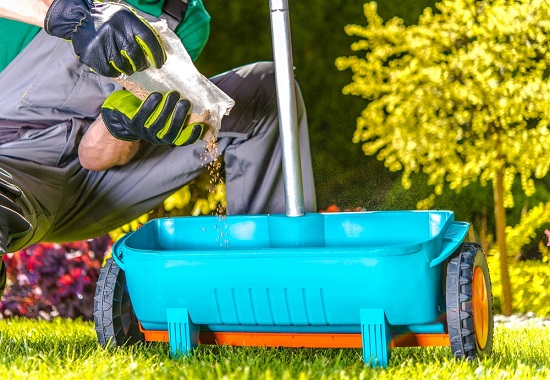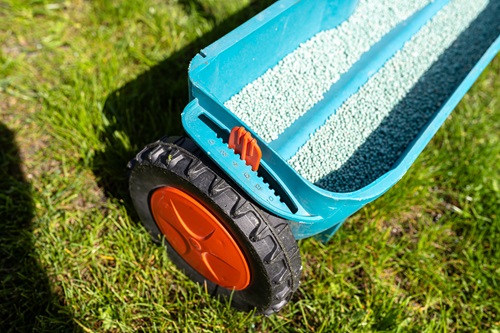
How often you fertilize your lawn depends on its type, ingredients, quantity, soil texture, nutrient levels and many other factors. You need to consider all factors when deciding when to fertilize your lawn as part of your lawn care routine.
Important Reasons Lawn Fertilization is Important
Lawn fertilizers contain the major nutrients, nitrogen, and potassium in different combinations and concentrations. The lawn fertilizer’s nitrogen content is always highest because nitrogen is the main nutrient that promotes leaf growth. While phosphate is essential for root growth, potassium aids with water and nutrient absorption. However, their numbers are usually lower since most soils already have enough of these two nutrients.
What Fertilizers to Use and How Much
There are three types of lawn fertilizers: organic, synthetic, and liquid water-soluble. Granular slow-release fertilizer, which slowly releases nitrogen into the grass over several months, is most commonly preferred.
A soil test in a laboratory is the only way to determine how much fertilizer your lawn requires. Over-fertilizing the lawn can cause more damage than using zero fertilizer.
Low and High Maintenance Lawn
It is important to decide what kind of lawn you want and how much money and time you can spend. A conventional synthetic lawn fertilizer should be applied at regular intervals to maintain a beautiful lawn. Organic fertilizer can be used if you prefer a natural-looking lawn that is low-maintenance.
Fertilization of Warm Season vs. Cold-Season Grasses
The type of grass determines the frequency and timing of fertilization.
Cool-Season Grasses
Perennial ryegrasses are good cool-season grasses. They thrive in cool temperatures, especially spring and autumn. These grasses need to be fertilized at least twice per year.
After the cool-season grasses have broken their winter dormancy in the spring, you can give your grass until late spring to allow it to grow and replenish its carbohydrate reserves. Before the summer heat sets in, apply slow-release fertilizer.
Cool-season grasses enter survival mode in the summer and fertilizing them is a wasteful and harmful practice that damages the grass. The second fertilization should take place in late summer, or even early to mid-fall. The fall fertilization, unlike the spring application, is intended to increase leaf growth. It is important to time it so that the grass still has several weeks of active growth before the hard frost begins its dormancy. It might not be necessary to fertilize again in the spring after this fall application, but again, only a soil analysis will determine if your lawn requires fertilization and how much.
Warm-Season Grasses
Warm-season grasses– buffalo grass, bermudagrass, St. Augustine grass, zoysia grass, and centipede grass — grow extremely active during the warmer weather. They are fertilized twice per year, just like cool-season grasses. However, the timing is slightly different.
You should apply fertilizer approximately six weeks after the last spring freeze when the grass turns green.
In the fall or late summer, second fertilization is recommended. This does two things. It replenishes the grass’ energy reserves, making it more resilient to heat and winter weeds. A soluble, easily available nitrogen fertilizer is recommended for the second fertilization.
The third application of nitrogen may be necessary for warmer areas with longer growing seasons. This will help to maintain grass growth through the winter and fall. Between applications, wait at least 45-60 days.
When is the best time to fertilize?
It is important to fertilize at the right time of day, not only when it is the best season for lawn care in Myrtle Beach. When the weather is cool, the grass is not too wet from the dew and fertilize in the morning. Apply fertilizer to the grass only when it is dry enough. The fertilizer must not stick to the grass blades.
You should keep an eye on the weather forecast as fertilizer should not be watered within two days of being applied. Fertilize before it rains. This should be a steady, slow rain, and not a storm. Otherwise, the fertilizer will get washed away, and will end up in streams and storm drains that pollute waterway. Alternative to rain, water your lawn with at least 25% of the water it receives after fertilizer has been applied.
Call Conner’s Lawn Care Service now if you need help in maintaining your lawn throughout the year.
Conner’s Lawn Care Service
Myrtle Beach, SC
843-504-4901
http://connerslawncare.com/

